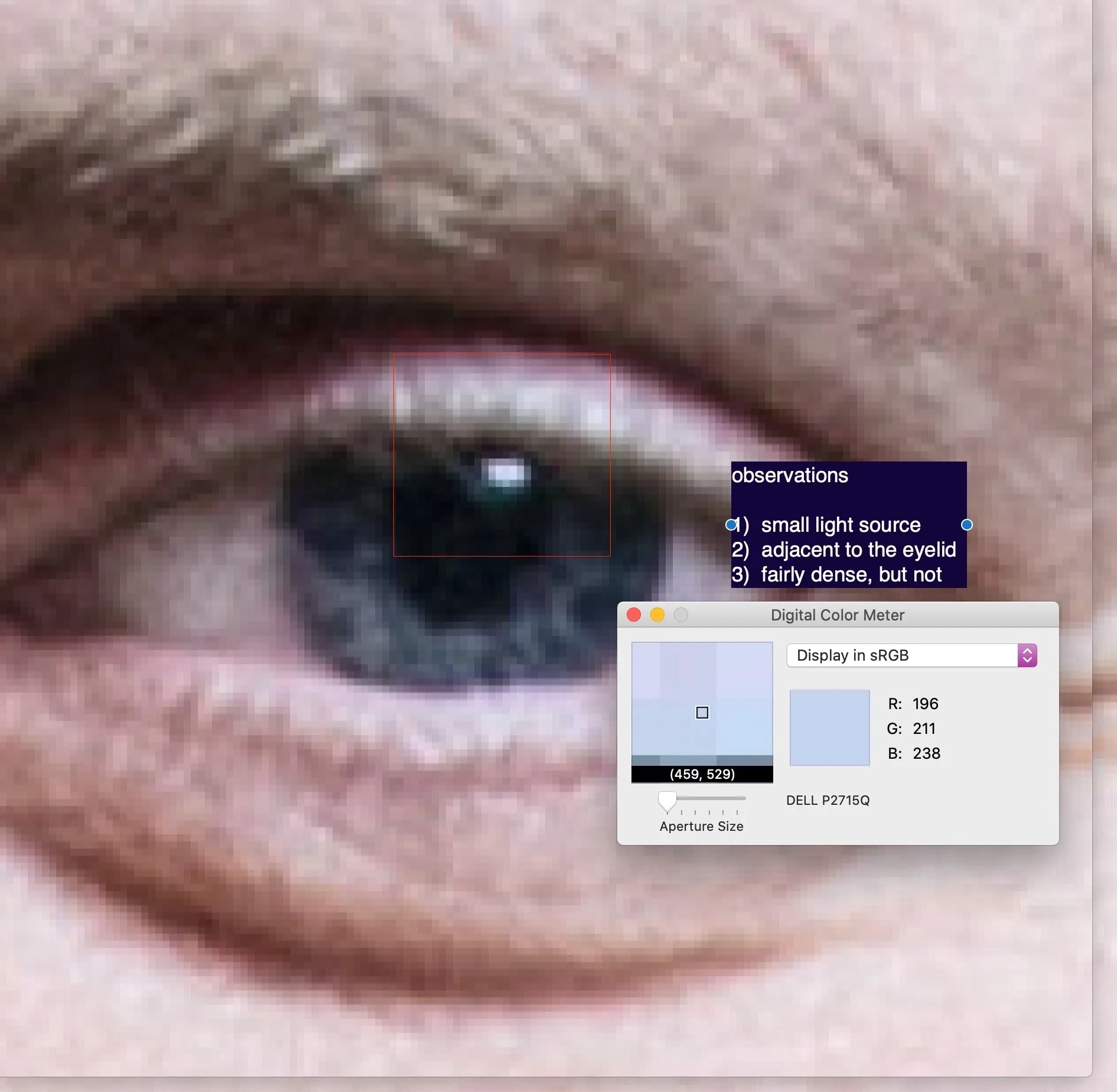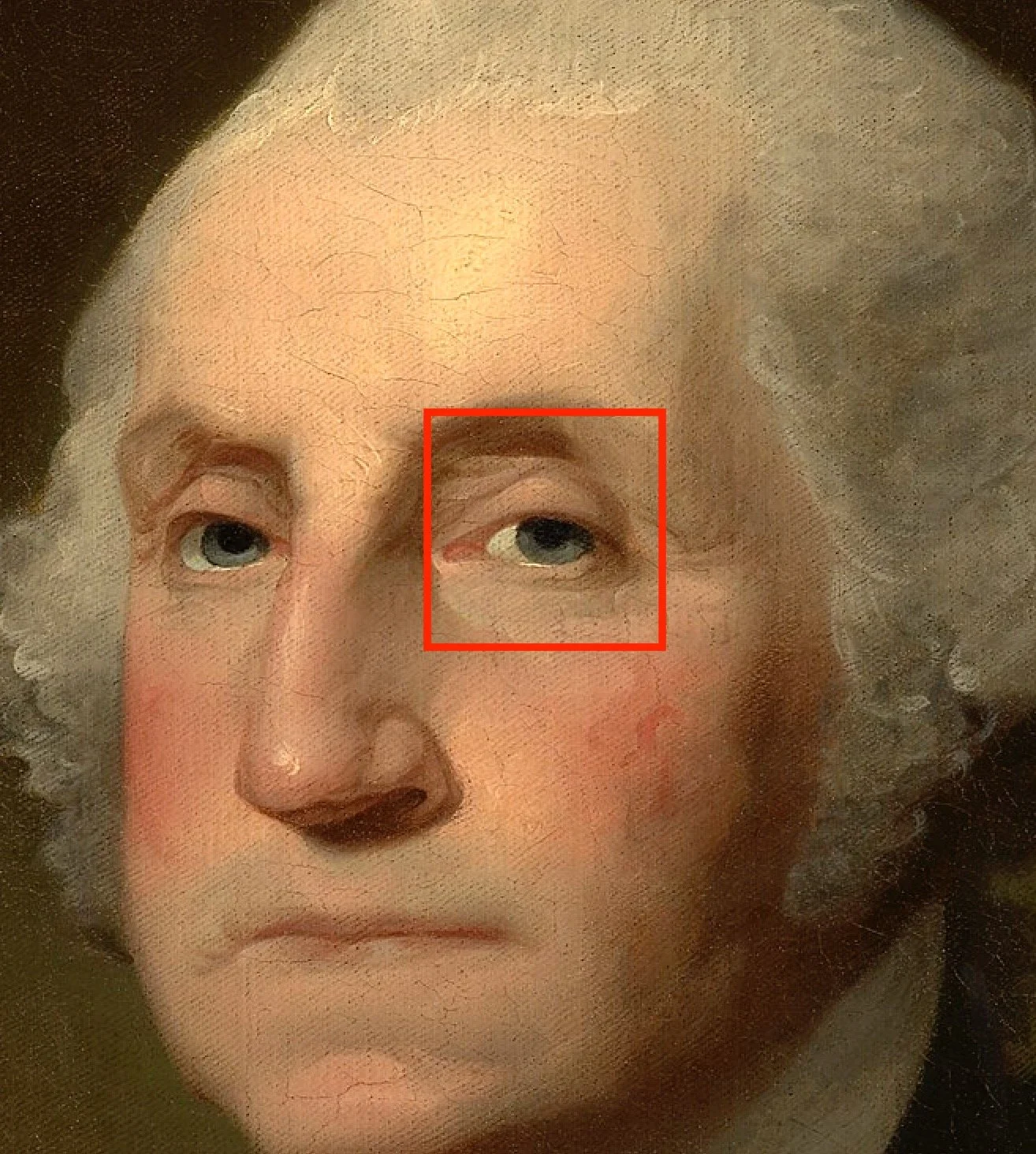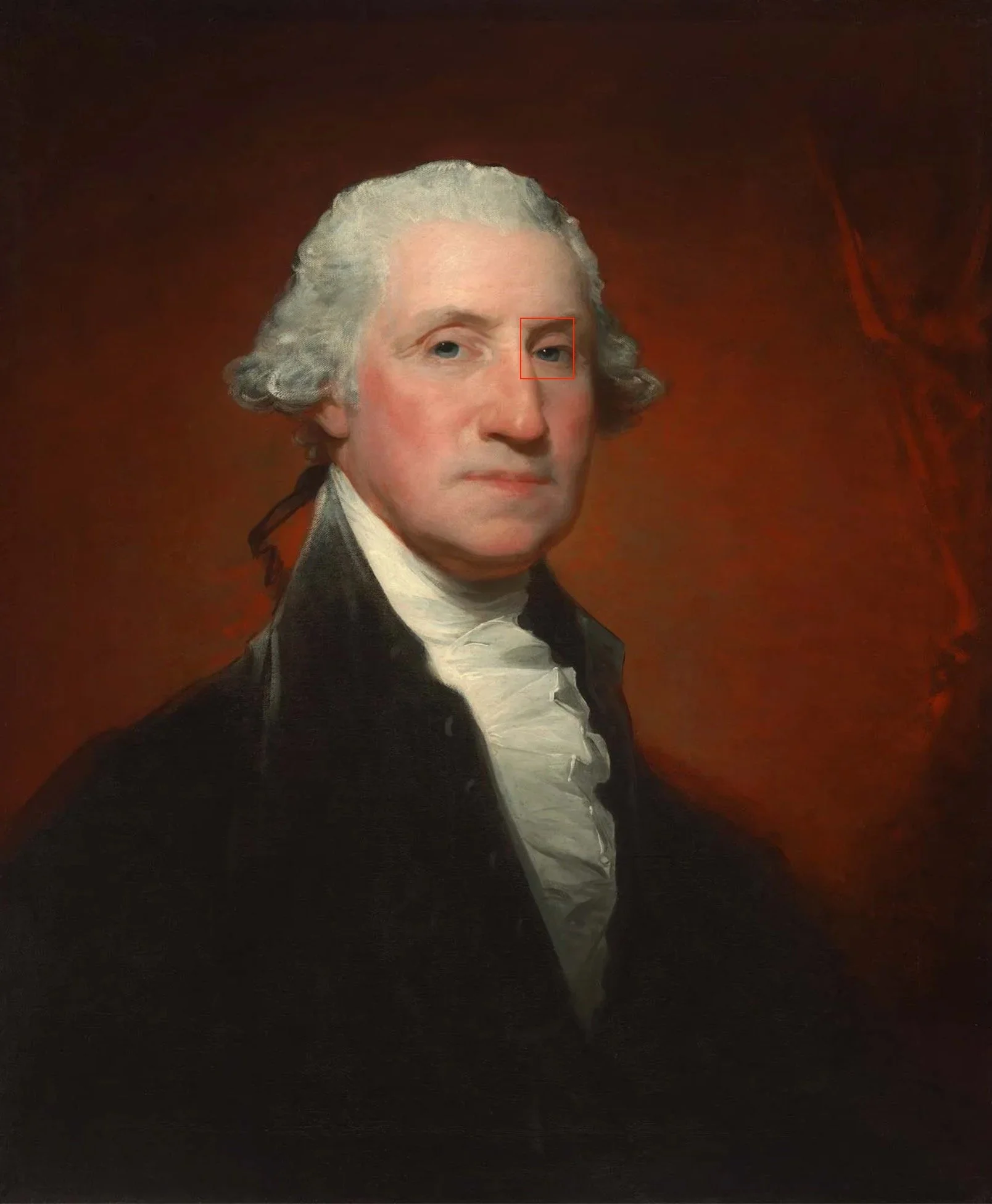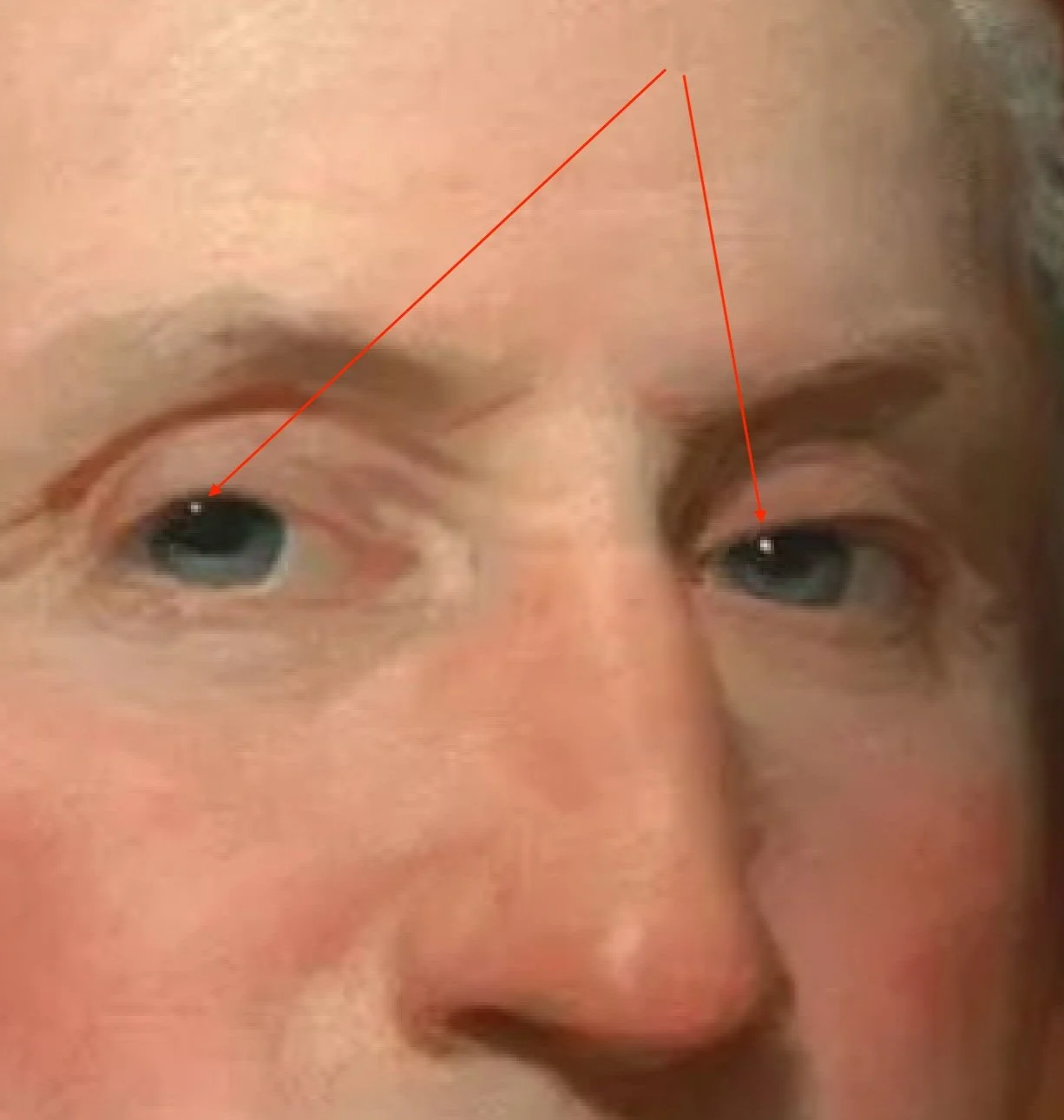[8-09] Catchlights
[Main points]
• Catchlights reflect light sources in front of the subject.
• In photography, the surface of the eye acts a round mirror.
• In painting, a catchlight is phrased as the “glint,” or spark, in the eye.
• Catchlights can be included in the photography process (i.e. a reflected light source), or revised/added during the retouching process.
• Catchlights add a sense of warmth or hope in the person depicted.
[Examples]
“Official Portrait of Tom Tugendhat” (2017, by Chris McAndrew) (link)
The Athenaeum Portrait (1796, by Gilbert Stuart)
The Vaughan Portrait (1795, by Gilbert Stuart)
[Example-01]
Thomas Georg John Tugendhat MBE VR (born 27 June 1973) is a member of the Parliament since 2015. (Image in public domain, source here)
• There are catchlights bilaterally (in both eyes).
• Catchlights are circular.
• Catchlight width is 25% of the pupil.
• Catchlights placed at the border of eye and eyelid.
• Catchlights are approximately 30° CW from vertical
• Catchlights are crisp, without decay or fading of intensity.
• Color average is (-13, 195, +25), so slightly cyan and more blue.
[Example-02]
Athenaeum Portrait, 1796, 121.9 cm × 94 cm (48.0 in × 37 in), by Gilbert Stuart
• The final image (above) is rendered based on an incomplete painting.
• There are no catchlights (glint in eye).
• Why? Stuart died in 1828. The painter had plenty of time to complete the painting. According to Wikipedia, this original was valuable as a template, so one presumes catchlights would be placed near the end of the painting process.
“The painting was never delivered to Washington. Instead, Stuart used it as a model for many replicas, capitalizing on Washington's fame. After Washington's death, he used it to paint 130 copies which he sold for $100 each. More than 60 of these copies still exist. Reportedly, Stuart referred to the painting as "his hundred dollar bill" due to the amount he charged for the copies.” (Wikipedia, link)
• Note: there is a pseudo catchlight, the sliver-like reflection of on the bottom eyelid (see 3rd image).
[Example-03]
George Washington (Vaughan portrait), 1795, by Gilbert Stuart (1755 - 1828).
• We see Washington’s right side of the face, with light striking the right side of the face, and catchlight 30° CCW from vertical.
• The catchlight (left eye) is “sharpened” by dark pixels next to the catchlight.
• Catchlights are ~20% of pupil width.
“A charming conversationalist, Stuart would chat while painting, thereby entertaining his sitters to maintain the freshness of their expressions during the long hours of posing. To the serious and taciturn Washington, however, Stuart's glib wit was annoying. The artist claimed, "An apathy seemed to seize him, and a vacuity spread over his countenance, most appalling to paint." Nevertheless, this image has spontaneity because of its quick, sketchy handling. To impart the sixty-three-year-old subject's imposing physical presence, Stuart placed the head high in the design. Finally, he added the crimson glow that complements Washington's ruddy complexion and surrounds his head like a superhuman aureole.” (nga.gov, link)
About: George Washington (Vaughan-Sinclair portrait), oil on canvas by Gilbert Stuart, 1795; in the National Gallery of Art, Washington, D.C. 73.8 × 61.1 cm.











